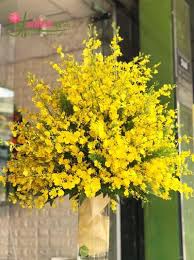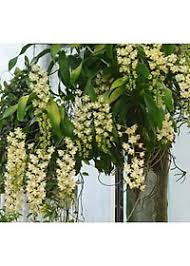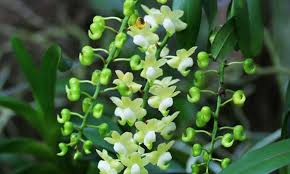
Dancing Lady Orchids, scientifically known as *Oncidium*, are not only famous for their stunning appearance but also for their delicate and enchanting fragrance. Cultivating these orchids to enhance their aromatic qualities requires a blend of proper care, environmental factors, and cultivation techniques. In this comprehensive guide, we will explore the various methods and practices that can help you encourage your Dancing Lady Orchids to emit a delightful scent, enriching your indoor and outdoor spaces.
## 1. Understanding the Dancing Lady Orchid
### 1.1 Botanical Background
Dancing Lady Orchids belong to the *Oncidium* genus, which consists of over 300 species. They are primarily found in tropical regions of Central and South America. The unique shape of their flowers, which resemble a dancer in motion, gives them their common name. These orchids are characterized by their vibrant colors, intricate patterns, and, in some cases, a subtle yet pleasant fragrance.
### 1.2 Characteristics of the Scent
The fragrance of Dancing Lady Orchids can vary widely depending on the specific variety and environmental conditions. While some produce a sweet, honey-like aroma, others may have a more earthy scent. The intensity of the fragrance can also change with temperature, humidity, and time of day. Understanding these factors is essential for cultivating orchids that emit the best fragrance.
## 2. Factors Influencing Fragrance
### 2.1 Genetic Factors
The genetic makeup of an orchid plays a significant role in its aromatic properties. Different species and hybrids of *Oncidium* can exhibit varying levels of fragrance. For example, some hybrids have been specifically bred for their scent, while others may be more visually appealing but lack a strong aroma. When choosing your Dancing Lady Orchid, consider selecting varieties known for their fragrance.
### 2.2 Environmental Conditions
The environment in which your orchids grow significantly affects their ability to produce fragrance. Factors such as light, temperature, humidity, and air circulation play crucial roles in promoting healthy growth and enhancing scent production.
#### 2.2.1 Light
Dancing Lady Orchids thrive in bright, indirect sunlight. While they can tolerate some direct sunlight, too much can lead to leaf burn. Adequate light exposure helps the plant produce energy through photosynthesis, which is vital for blooming and scent production. A light meter can help you gauge the light intensity in your growing area.
#### 2.2.2 Temperature
Temperature fluctuations can impact fragrance intensity. During the day, temperatures should ideally range from 75°F to 85°F (24°C to 29°C), while nighttime temperatures should drop to around 60°F to 70°F (15°C to 21°C). Maintaining this temperature range helps stimulate blooming and fragrance release.
#### 2.2.3 Humidity
High humidity levels are essential for the overall health of Dancing Lady Orchids and their ability to produce fragrance. Orchids generally prefer humidity levels between 50% and 70%. You can increase humidity by using a humidity tray, misting the plants regularly, or employing a humidifier in the growing area.
#### 2.2.4 Air Circulation
Good air circulation is crucial for orchid health. Stagnant air can lead to mold growth and pests, which can hinder fragrance production. Ensure that your orchids are placed in a well-ventilated area, and consider using a small fan to promote air movement.
## 3. Proper Care Techniques
### 3.1 Watering Practices
Watering is one of the most critical aspects of orchid care that directly influences fragrance. Overwatering can lead to root rot and hinder blooming, while underwatering can stress the plant and affect its ability to produce flowers.
#### 3.1.1 Frequency and Technique
Water your Dancing Lady Orchids when the top inch of the potting medium feels dry. Use room-temperature water to avoid shocking the plant. Water until it drains from the bottom of the pot, ensuring the roots receive adequate moisture without sitting in water.
#### 3.1.2 Fertilization
Fertilization is another vital factor that can enhance the fragrance of your orchids. During the growing season (spring and summer), use a balanced fertilizer (30-10-10) every two weeks. In the fall and winter, reduce fertilization to once a month, as the plants require less nutrients during their dormant period. A well-fed orchid is more likely to produce vibrant blooms with a strong scent.
### 3.2 Potting Medium and Repotting
The choice of potting medium can impact water retention and aeration, which are essential for root health and fragrance production.
#### 3.2.1 Choosing the Right Medium
A well-draining potting mix specifically formulated for orchids is ideal. Common materials include bark, sphagnum moss, and perlite. The mix should retain some moisture while allowing excess water to drain easily.
#### 3.2.2 Repotting Techniques
Repot your Dancing Lady Orchids every 1 to 2 years to refresh the potting medium and check the health of the roots. Choose a slightly larger pot and ensure proper drainage holes. Gently remove the orchid from its old pot, trim any dead or damaged roots, and place it in the new pot with fresh potting mix.
## 4. Encouraging Blooming
### 4.1 Light Requirements for Blooming
As previously mentioned, light is crucial for blooming. To encourage your Dancing Lady Orchids to bloom and release their fragrance, ensure they receive at least 12 to 14 hours of bright, indirect sunlight daily. If natural light is insufficient, consider using grow lights designed for orchids.
### 4.2 Temperature Drops
To stimulate blooming, you can mimic natural temperature fluctuations. After your orchids have finished blooming, reduce daytime temperatures to around 65°F to 75°F (18°C to 24°C) for about 4 to 6 weeks. This drop in temperature signals the plant to prepare for its next blooming cycle, which can enhance fragrance production.
### 4.3 Pruning and Care After Blooming
Once your Dancing Lady Orchids have finished blooming, it’s essential to care for them properly to encourage future blooms. After the flowers have faded, prune the spent flower spikes back to the base. This practice encourages the plant to focus its energy on new growth and future blooms.
## 5. Seasonal Care
### 5.1 Caring for Orchids in Different Seasons
Dancing Lady Orchids require different care routines throughout the seasons to optimize fragrance and blooming potential.
#### 5.1.1 Spring
In spring, your orchids will start to grow actively. Increase watering and fertilization to support new growth. Monitor light levels, ensuring they receive adequate sunlight.
#### 5.1.2 Summer
Summer is the peak growing season. Continue regular watering, fertilization, and humidity management. Watch for pests, as warmer weather can invite unwanted guests.
#### 5.1.3 Fall
In the fall, reduce watering and fertilization as the plant prepares for dormancy. Monitor temperatures and maintain adequate humidity levels to support blooming in the coming months.
#### 5.1.4 Winter
During winter, reduce watering frequency as the plant enters a dormant phase. Ensure the orchid receives enough light and humidity. This dormant period is essential for preparing the plant for the next blooming cycle.
## 6. Enhancing Fragrance with Environmental Manipulation
### 6.1 Aromatic Companions
Consider placing aromatic plants near your Dancing Lady Orchids. The scents from herbs like basil, rosemary, or lavender can enhance the overall fragrance experience in your space. However, ensure these companion plants do not compete for resources or light.
### 6.2 Using Essential Oils
While essential oils should not be directly applied to the orchids, you can create an aromatic environment by diffusing essential oils nearby. Oils like jasmine or ylang-ylang can complement the natural fragrance of the Dancing Lady Orchids, creating a delightful ambiance.
## 7. Common Issues and Solutions
### 7.1 Pest Management
Pests like aphids, spider mites, and mealybugs can affect the health of your orchids and their ability to bloom. Regularly inspect your plants for signs of infestations. Use insecticidal soap or neem oil to treat affected areas, following the product instructions carefully.
### 7.2 Disease Prevention
Orchids are susceptible to fungal and bacterial diseases, especially in humid environments. To prevent these issues, ensure proper air circulation and avoid overhead watering. If you notice signs of disease, isolate the affected plant and treat it with appropriate fungicides or bactericides.
### 7.3 Environmental Stress
Environmental stressors, such as temperature extremes or insufficient light, can hinder blooming and fragrance production. Monitor the growing conditions closely and make adjustments as needed to ensure your Dancing Lady Orchids thrive.
## 8. Conclusion
Cultivating Dancing Lady Orchids to bloom fragrantly is an art that combines knowledge, patience, and care. By understanding the various factors that influence fragrance production and implementing proper care techniques, you can encourage your orchids to release their enchanting scent. From selecting the right varieties to providing optimal growing conditions, each step contributes to the overall health and beauty of your orchids.
As you nurture your Dancing Lady Orchids, take the time to appreciate their unique beauty and the delightful fragrance they bring to your space. With the right care and attention, your orchids will not only flourish but also fill your home with their captivating aroma, creating a serene and pleasant environment for all to enjoy.


